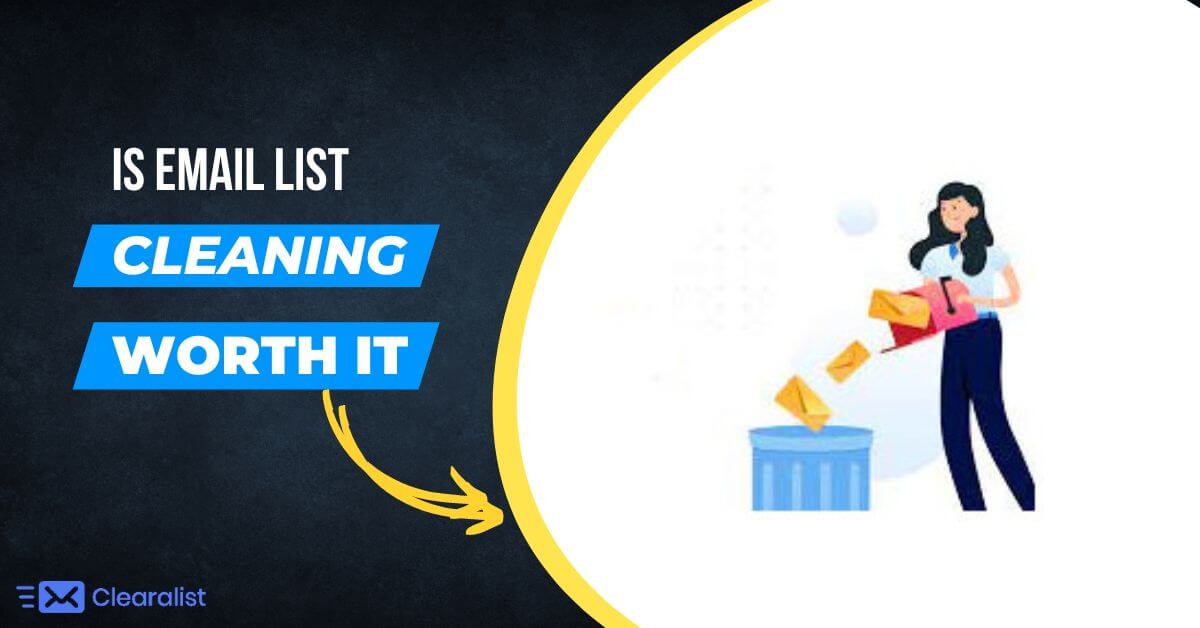
The answer is YES!! If your email bounce rate is giving you stress, you’re right to be concerned. A high bounce rate indicates people aren’t hearing from you, so your complete email marketing is underperforming. Nevertheless, finding the root of your bounces and reducing them isn’t that hard. Our suggestions below are going to help you do just that.
Why your email bounce rate matters (Email List Cleaning Importance)
Let’s face it: email marketing isn’t simple.
On the one hand, it holds the potential to be your most profitable form of customer outreach by far. In study after study, it surpasses social media, pay-per-click, display ads, search engine marketing, and practically every other form of digital content available.
That’s why it’s so essential to have an effective strategy in place that will get customers matching through to your website, and turn leads into conversions.
Of course, making those clicks is easier said than done. You need email content that converts and sells.
You have to take into account how you’re structuring your emails and how your call to action is worded.
Also, you’ve got to concentrate on email preview text and ensure that you’re writing outstanding subject lines to improve your open rate.
Taking each of these things into account is necessary. There’s no question about it. But in the end, if your email bounce rate is high, none of the above matters. First, you’ve got to ensure that your emails are being delivered.
Without proper email delivery (and the accompanying low bounce rates), no one will ever see that astounding copy you’ve written. And, maybe even more importantly, consistently high bounce rates can get your IP blacklisted. When that occurs, your open rates will fall.
Do not worry, we have three tips that, when taken together, will dramatically reduce your email bounce rate.
Ready to learn more? Let’s get started!
Hard vs. soft email bounce rate
Before discussing any issues that may be creating a higher-than-average email bounce rate, it’s crucial to understand what a “bounce” actually is.
When it comes to email marketing, we need to differentiate between so-called hard bounces as opposed to soft bounces.
A hard bounce is a permanent delivery failure. This can be generated by any number of issues: for example, an old domain or an expired email account. There’s no hope of ever reaching a hard-bounce account, and you shouldn’t attempt to send another message to it.
Soft bounces, on the other hand, are a temporary form of delivery failure.
Like hard bounces, they can occur for a range of different reasons. The recipient’s email server might be down temporarily; their mailbox could be full; or the message you sent might be too long.
What’s a “normal” bounce rate?
According to a new study, hard and soft bounce rates vary by industry. However, when linked for each industry and averaged across the board, a total bounce rate of roughly 2% is considered average.
If the percentage of undeliverable emails in your campaigns is significantly higher, you’ve got work to do!
Build an opt-in list
When you were first starting and beginning to build your email list, you probably encountered a random website offering to sell you a list of subscriber emails. Also, you may have found tools that allow you to “scrape” contact data from various websites.
While there are some instances where gathering data this way can make sense (for example, if you’re doing highly personalized, individual outreach to big leads that could become major accounts), your best bet for building an email list is through an opt-in system.
Simply put, sending out emails to a cold list that you’ve purchased is going to result in a high bounce rate.
Instead, you want a list that’s comprised of people who have actually requested to receive content from you. These subscribers are highly valuable.
A list of people who have never heard of you will be considerably less receptive to what you’re offering. And, in many cases, you could end up with a large number of email addresses that aren’t even valid.
Sending out an email to a newly purchased list of contacts who never opted in to your content can be a recipe for failure: if enough of them bounce, you could end up blacklisted.
Long story short: work to build an opt-in email list.
Email List Cleaning Importance
No email list is perfect. Even if you’ve built it up yourself, there will still be undeliverable addresses. People mistype their email addresses when filling out their opt-in forms. Or, they deactivate an email account or allow it to fill up such that it can’t receive any more messages.
No matter what type of enterprise you’re running or how you’ve put together your email list, using an email verification service like Clearalist is far and away your best bet for reducing your bounce rate.
With email verification, you’ll know in advance which addresses are undeliverable, and you can remove them from your list before you send out your next email.
Cleaning your list usually should be a routine task if you want to maximize your delivery rate.
By understanding the difference between hard and soft bounces, using an opt-in system, and verifying your email list with Clearalist, you’ll be on your way to low bounce rates, which means more clicks and more conversions.